- Home
- Tom Clancy
Shadow Warriors: Inside the Special Forces Page 5
Shadow Warriors: Inside the Special Forces Read online
Page 5
THE MEETING IN THE JOC
October 7, 1985: It was time to test the new initiatives.
Soon after Stiner arrived at the JOC, he learned the identity of the hijacked ship. It was the Italian cruise liner Achille Lauro. The information came by way of a tantalizingly brief emergency message from the ship, which had been received by a radio station in Göteborg, Sweden. According to the message, a group of armed men had taken control of the liner off the coast of Egypt. And that was it. It was very little to go on, but enough to be able to figure out what forces would be required to “take the ship down”—and to know that they needed to launch instantly.
Because this was a complex target, and because no one knew whether the takedown would be in a port or somewhere on the high seas, Stiner instructed J-3 (Operations Officer) Colonel Frank Akers to notify the commanders to prepare the following units for immediate deployment (Akers had already given them a heads-up):SEALs : Required assault teams, sniper teams, and special boat detachments. Since this was to be primarily a maritime operation, the Navy SEALs would play the leading role.
Other selected personnel and special units: leaders, planners, and intelligence operators. Approximately twenty-five personnel.
The Army special helicopter package: ten Blackhawks, six Little Bird gunships, and four Little Bird lift ships (this was the standard alert package that had been developed over time; it was adequate for the mission and would fit in available jet transports).
Air Force special tactics operation: for airfield control and pararescue.
The Task Force Command Group: Necessary operations and intelligence staff officers, communications, and medical personnel.
Though the SEALs were expertly trained in takedowns, and could do the job in a matter of minutes, a cruise ship is the toughest of targets. First, the takedown must be done at night while the ship is under way, because nobody has yet figured out a way to stop a ship without damaging it; then, once the SEALs are aboard, they have to take out all the terrorists they can on their initial sweep, control the passengers and crew, and search at least a thousand rooms, nooks, and crannies and clear them of hidden terrorists... and possibly explosives.
Once the force package had been designated, Stiner instructed his deputy commander, Brigadier General Frank Kelly, to begin working the Military Airlift Command for the long-range strategic lift aircraft needed, but with capabilities designed specifically for special operations needs. It was a much larger force than was normally required, but this would be a very complex and challenging target.
Airlift, Stiner knew, would be the long pole in the tent, since it was under the control of the Military Airlift Command and outside his authority. Although the Task Force had a readiness requirement to be wheels-up in two hours, the necessary lift was not maintained on the same alert status—especially the C-5s. Additionally, the specially trained SOLL II crews (Special Operations Low Level crews fly blacked-out, low-level, and in all weather conditions) had to be rounded up to fly the planes. The terrorists were not dumb. They knew our reaction time, based upon the distance that had to be traveled and the time the Washington decision-making cycle usually took, and they operated inside these times. Every minute counted.
The JSOTF’s standing request was to launch immediately after first notification of an incident. If it turned out no U.S. interest was involved, then the planes could be turned around over the Atlantic and brought home, but if there was a threat, the Task Force would be way ahead of the game.
Meanwhile, Stiner had to check with Washington for further intelligence, and since approval authority for launch and execution came from the Secretary of Defense and the President, he had to see about that as well, working through the Chairman of the Joint Chiefs or his assistant, who communicated with the Defense Secretary.
At about 0900, Stiner called the J-3 of the Joint Staff, who, like Stiner, was available twenty-four hours a day, to see if he had any further intelligence, and to request permission to launch his liaison teams. The J-3 would then take the request to the Chairman, Admiral William Crowe, who had taken over the job only three weeks earlier.
The three-man liaison teams were always on standby. Each team—an operations officer (a colonel or lieutenant colonel), an intelligence officer (a major), and a SATCOM radio operator—gave Stiner immediate access to any key people who might be players during a crisis. The liaison teams always knew what he was thinking and doing, and were authorized to speak for him.
The J-3 assured Stiner that he would get back to him soon about sending the liaison teams. “Information is sketchy and incomplete,” he continued, “but the ship seems to have been hijacked near Alexandria, Egypt, after dropping off most of its passengers for a tour of the Pyramids. There are indications that Americans are among the remaining passengers, but it’s not known how many got off for the tour and how many remain on board.”
“Good news,” Stiner answered. “That means a lot fewer to sort and control ... but all the more reason to launch right away.”
“You’ll be glad to know, then, that the OSG will be meeting soon,” he replied. The OSG would influence the launch decision. “We should have some decision from them shortly.”
The U.S. interagency crisis team, also known as the operational subgroup (OSG), or terrorist incident working group, was chaired by the National Security Adviser, Bud MacFarlane, but since MacFarlane was out of town accompanying the President on a trip to Chicago, his deputy, Vice Admiral John Poindexter, was running the meeting. Its members included from the State Department, Ambassador for Counterterrorism Robert Oakley and Assistant Secretary of Defense Noel Cook; Charles Allen from the CIA; Oliver “Buck” Revell from the FBI; Fred Fielding from the White House staff; and Oliver North from the NSC staff. The group’s mission was to monitor crisis situations and coordinate interagency support as appropriate for the situation. Though the group had an operational role, it was not in the chain of command, but did make appropriate recommendations to the National Security Council.
It was already early afternoon when Stiner called the J-3 again to inform him that, except for the airlift, the Task Force was ready to go and to please emphasize this to Admiral Crowe.
“We have to take the ship down during darkness,” Stiner told the J-3, “which means it’s imperative that we get at least as far as Sigonella come daylight tomorrow”—Tuesday, October 8. “This will give us options we would not otherwise have.”
Though this was Admiral Crowe’s first crisis since becoming the Chairman, his Assistant, Vice Admiral Arthur “Art” Moreau had done that job for a couple of years. He knew the ropes, had worked previous crises, had personal relationships with several key allies, and could make things happen quickly.
Special operations forces had been back and forth through Sigonella so many times during 1985, reacting to terrorist incidents and setting up planning and liaison for the future, that Stiner had stationed a permanent liaison team and SATCOM there as an extension of the U.S. commander’s operations center. This team was Stiner’s eyes and cars throughout the Mediterranean, and it operated twenty-four hours a day, collecting operational and intelligence information and coordinating JSOTF’s requirements for passing through Sigonella.
Sigonella was a vital base as far as JSOTF operations were concerned, and the commander of the U.S. side, Navy Captain Bill Spearman, knew how to make things happen. Spearman always took care of JSOTF’s needs, no matter what they were, but also had very good relations with his Italian counterparts (though on one occasion, as luck would have it, Stiner and Spearman had worked out plans, should the need ever arise, for Spearman to take control of the airport control tower from the Italians, who normally ran it.... The plan actually had to be put into effect later that week).
Sometime during midafternoon, word finally came from Washington approving the launch of Stiner’s liaison teams. They all departed in civilian clothes, traveling by commercial air.
Colonel “Dave” headed the team that would set
up at the Embassy in Rome. Another team flew to Stuttgart, Germany, home of the U.S. European Command (USEUCOM). Another team went to Gacta, Italy, Vice Admiral Frank Kelso’s Sixth Fleet Headquarters. And one went to the Military Airlift Command at Scott Air Force Base in St. Louis, Missouri.
During the afternoon, Stiner had a conference call with the commanders of his task force to coordinate their actions. Each command had already exchanged liaison officers, which was normal operating procedure—and it was the same people each time.
Every hour or so, he talked to Washington, pressing for airlift and the decision to launch.... Time was passing!
Meanwhile, additional intelligence began to trickle in, but the actual whereabouts of the Achille Lauro was unknown, though reconnaissance planes from the USS Saratoga were looking for it.
At long last, at about 1700 hours, Stiner was informed that approval had finally been given to launch the Task Force. The airplanes would be arriving shortly. Everyone moved quickly to their departure airfields and prepared for outloading. All the required equipment (helicopters, special boats, etc.) had already been made ready, and now it was just a matter of loading, which would not take very long once the planes arrived.
Soon after that, a call came to Stiner from a member of the National Security Council staff, wanting to know why they were taking so long to get under way.
“We’ve been ready most of the day, Stiner told him. ”Maybe you can help by calling the Pentagon to speed up our airlift.”
The airlift arrived at about midnight—twelve to fourteen hours after Stiner had hoped to be in the air. During the loading, special hatch-mount antennas were installed on the airplanes, both for plane-to-plane communications en route and for communications with any major commands that might be involved with the operation. The airplanes were also quickly configured inside with working tables and communications modules, for operational planning.
On Stiner’s plane, in addition to the battle staff of colonels, lieutenant colonels, and majors engaged in operational, intelligence, air operations, and the like, there were Air Force combat controllers and communicators, about twenty operators/shooters, and the medical-surgical suite (an operating table had been set up on the tailgate). Major Dr. Darrel Porr, the task force’s chief medical officer, had procured state-of-the-art medical equipment from all over the world, and had assembled a stable of specialist surgeons who could, if necessary, perform emergency surgery on the tailgate of the plane.
At about 0100 on October 8, the aircraft began lifting off for Sigonella. Since the Achille Lauro still had not been located, Stiner’s plan was to stop there briefly and drop off a small team of SEALs and a pair of Little Bird gunships. This was a precautionary measure, in case they were needed later. They were.
Then he planned to continue quickly on to a military base on Cyprus, which was strategically located in the eastern part of the Mediterranean and within helicopter range of most potential targets. The Task Force was familiar with this base, and had used it several times before. But using it came with conditions. Because of Soviet Intelligence Satellite (SATRAN) passes, JSOTF aircraft had to arrive during darkness, get all their equipment off-loaded and into hangars, and get their transport planes out of there before daylight. They’d be dispersed to other bases in the region, but close enough to react if the teams had to move quickly.
As they flew over the Atlantic, Stiner took time to process the latest intelligence information. A picture was taking shape about the challenge they faced: There were four heavily armed terrorists, ninety-seven passengers of several nationalities (some of whom were U.S. citizens), and a ship’s crew of 344. The ship’s location was still unknown. It had gone into “radio silence” immediately following the hijacking, headed north, and was presumed to be somewhere in the eastern Mediterranean.
THERE was nothing more to be done now. The plans were in place, and would be updated as soon as any more information came in. Once they hit the ground, his units would start to put the plans into effect, but for now it was a rare moment of peace.
As the plane vibrated around him, Stiner’s thoughts drifted back to what had brought him to this time and place, to all the training and missions that had come before, to the hot and often desolate places he had been. And he thought of the men who had come before him, who had created the kind of warfare in which he was now engaged.
Commando raids, deep reconnaissance, sabotage, guerrilla bands—these had all existed as long as men had clashed violently with other men. But what was now called “unconventional warfare” had not become officially recognized as a proper activity for “real” soldiers until World War II.
During World War II, they wrote the book on special warfare....
II
PIONEERS
0200. August 11, 1944. Central France.
A lone, low-flying British Stirling bomber winged over the German-occupied Department of Correze, south of the Loire in the Massif Central. It had taken off three hours earlier from a base in England and joined the bomber stream of Stirlings and Halifaxes destined for Germany. Over France it had faked an abort and looped out of the stream, turning west toward England, all the while descending. When it was low enough to become invisible to German radar, it had made another turn, this time to the southeast.
This particular Stirling was not fitted out with bombs. Packed tight within its narrow fuselage were a ten-man French SAS reconnaissance team, parachute-equipped cargo pods, and a three-man OSS Jedburgh team, code-named “Team James.” The SAS troops were commanded by a Captain Wauthier. Team James consisted of an American lieutenant, Jack Singlaub; an American technical sergeant, Tony Dennau; and a French army lieutenant, whose nom de guerre was Dominique Leb.
Singlaub, the team commander, was a Californian who had come to the OSS out of the 515th Parachute Infantry Regiment, at Fort Benning, Ceorgia (he was also demolition-qualified, having trained for it after he’d broken an ankle and needed something useful to do).
Dennau was a Sinatra-sized ball of fire from Green Bay, Wisconsin, who actually enjoyed jumping out of airplanes in the dark and then hiking through hostile countryside. He was the radio operator, but was also a terrific shot.
The Frenchman was a Breton aristocrat whose real name was Jacques Le Bel de Penguilly. Since Nazi reprisals against Free French officers’ families were common, Maquis officers often concealed their true identities. Jacques (Dominique) was a necessary part of the team. His French was of course more fluent than the Americans’, but even more important, he had a far better sense than Singlaub of the intricacies of the French political scene. The Free French were fiercely divided into contending factions, all hoping to lead the nation after the war—with Monarchists on the far right, Communists on the far left, and the followers of General de Gaulle in the center. With the notable exception of the Communists, the factions kept their differences out of the struggle with the Nazis. The Communists, no less than the others, wanted to kick the Nazis out, but they were as much interested in achieving an end state after the war that favored their cause. They cooperated when it suited them. Jacques was a Gaullist.
Singlaub was jammed against the Stirling’s forward bulkhead, bent under the weight of his parachute. Though Dominique and Dennau were close by (similarly hunchbacked), there was no conversation. The roar of the engines and the wail of the slipstream made talk impossible. They all wore British camouflage smocks and para-helmets. On his chest, Singlaub carried a musette bag containing codebooks and 100,000 French francs. A leg bag held extra ammunition and grenades. He was armed with a Spanish 9mm Llama pistol, a weapon chosen because of the relative availability of 9mm ammunition in occupied Europe.
The engines changed tone and the aircraft slowed.
Aft, the tough, highly trained SAS troops gathered around a rectangular hole in the aircraft’s rear deck—the jump hatch, or Joe hole, as it was called. Soon, they were dropping through the hole, one by one. Then a crew member pushed their cargo pods after them.
The Jeds were next.
They proceeded aft toward the dark, howling rectangle.
“About three minutes,” the RAF dispatcher shouted into Singlaub’s ear.
They hooked up their static lines. Then each man checked the snap-clips of his teammates on the deck ring, and double-checked his own. Looking down through the hole, Singlaub could just barely make out the dark masses of forests and the lighter blotches of fields. No lights were visible, and few roads.
Three orange signal flares lit the night below, the Maquis drop-zone signal. Meanwhile, Singlaub knew, a Maquis controller was flashing a preset code letter to the pilot. If the code letter was correct, they’d be dropping through the hole before they started another breath.
“Go!” the dispatcher shouted, smacking Singlaub’s helmet. And the young lieutenant went feet first into the dark, 800 feet above the countryside, ankles and knees together, hands tight against the wool of his trousers. He hurtled through the dark for a moment, then the chute opened with the familiar whomping sound he knew so well. (Unlike American chutes, which burst open the moment the static line went tight and could easily malfunction, British chutes didn’t deploy until the suspension lines went taut—a much safer system. On the other hand, American paratroopers carried a small reserve chute on their chest; Brits did not. If their chutes failed, that was it.)
Singlaub checked his canopy, noting two more canopies above him—Dominique and Dennau. Behind them, four smaller canopies also opened: their cargo pods.
HE had trained long and hard for that moment.
It had begun on an October morning in 1943 in Washington, D.C., in an office in the Munitions Building. IIe’d gotten there after answering a call for Foreign-language-speaking volunteers who were eager for hazardous duty behind enemy lines (he spoke fair French). The outfit issuing the call was the OSS—Office of Strategic Services—about which Singlaub knew very little, except that it was involved in secret intelligence and sabotage operations overseas and was commanded by the legendary General “Wild Bill” Donovan. That seemed pretty good to Singlaub.

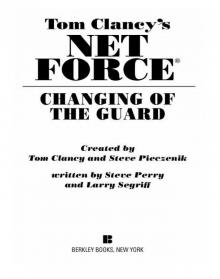 Changing of the Guard
Changing of the Guard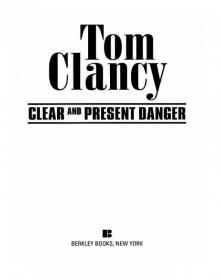 Clear and Present Danger
Clear and Present Danger Hounds of Rome
Hounds of Rome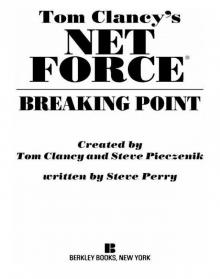 Breaking Point
Breaking Point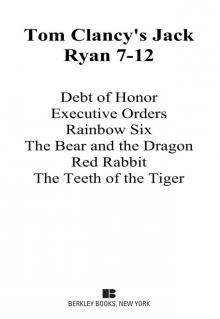 Tom Clancy's Jack Ryan Books 7-12
Tom Clancy's Jack Ryan Books 7-12 Full Force and Effect
Full Force and Effect The Archimedes Effect
The Archimedes Effect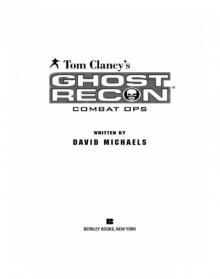 Combat Ops
Combat Ops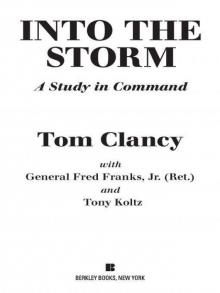 Into the Storm: On the Ground in Iraq
Into the Storm: On the Ground in Iraq Under Fire
Under Fire Point of Impact
Point of Impact Red Rabbit
Red Rabbit Rainbow Six
Rainbow Six The Hunt for Red October
The Hunt for Red October The Teeth of the Tiger
The Teeth of the Tiger Conviction (2009)
Conviction (2009)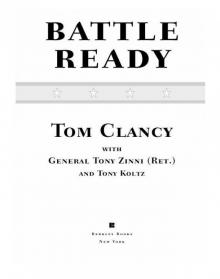 Battle Ready
Battle Ready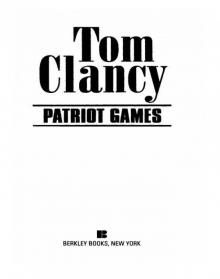 Patriot Games
Patriot Games The Sum of All Fears
The Sum of All Fears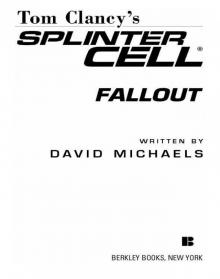 Fallout (2007)
Fallout (2007) Red Storm Rising
Red Storm Rising The Cardinal of the Kremlin
The Cardinal of the Kremlin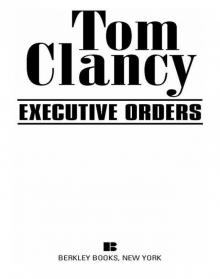 Executive Orders
Executive Orders Lincoln, the unknown
Lincoln, the unknown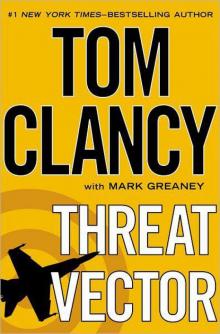 Threat Vector
Threat Vector The Hunted
The Hunted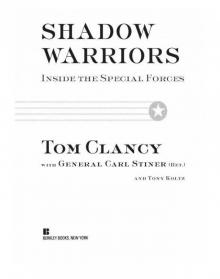 Shadow Warriors: Inside the Special Forces
Shadow Warriors: Inside the Special Forces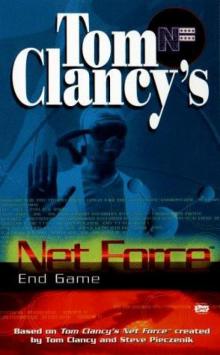 End Game
End Game Special Forces: A Guided Tour of U.S. Army Special Forces
Special Forces: A Guided Tour of U.S. Army Special Forces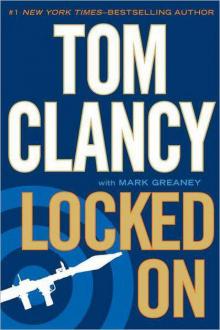 Locked On
Locked On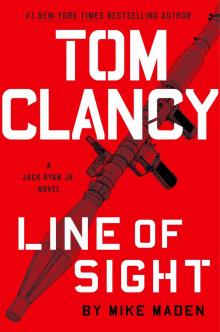 Line of Sight
Line of Sight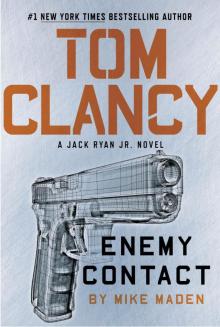 Tom Clancy Enemy Contact - Mike Maden
Tom Clancy Enemy Contact - Mike Maden Fighter Wing: A Guided Tour of an Air Force Combat Wing
Fighter Wing: A Guided Tour of an Air Force Combat Wing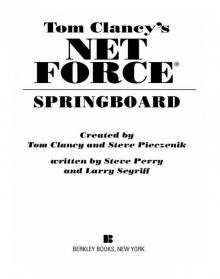 Springboard
Springboard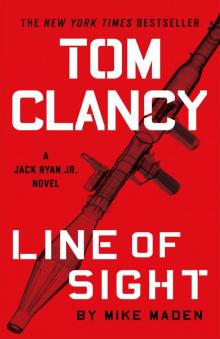 Line of Sight - Mike Maden
Line of Sight - Mike Maden EndWar
EndWar Dead or Alive
Dead or Alive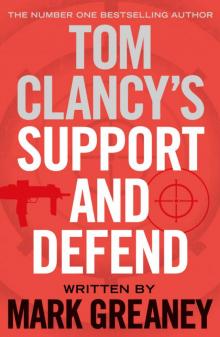 Tom Clancy Support and Defend
Tom Clancy Support and Defend Checkmate
Checkmate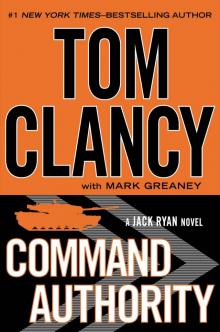 Command Authority
Command Authority Carrier: A Guided Tour of an Aircraft Carrier
Carrier: A Guided Tour of an Aircraft Carrier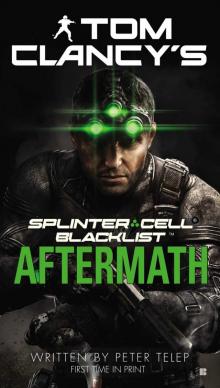 Blacklist Aftermath
Blacklist Aftermath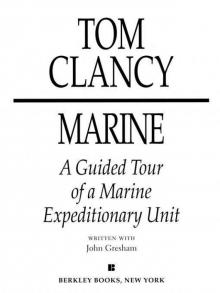 Marine: A Guided Tour of a Marine Expeditionary Unit
Marine: A Guided Tour of a Marine Expeditionary Unit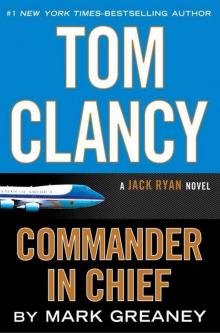 Commander-In-Chief
Commander-In-Chief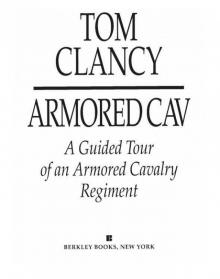 Armored Cav: A Guided Tour of an Armored Cavalry Regiment
Armored Cav: A Guided Tour of an Armored Cavalry Regiment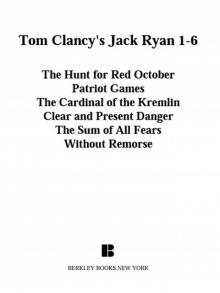 Tom Clancy's Jack Ryan Books 1-6
Tom Clancy's Jack Ryan Books 1-6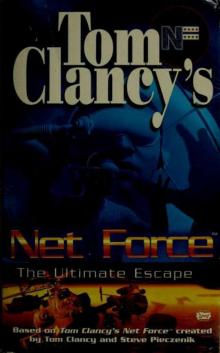 The Ultimate Escape
The Ultimate Escape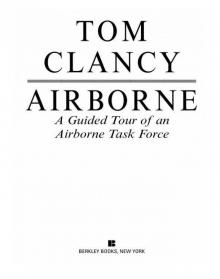 Airborne: A Guided Tour of an Airborne Task Force
Airborne: A Guided Tour of an Airborne Task Force Debt of Honor
Debt of Honor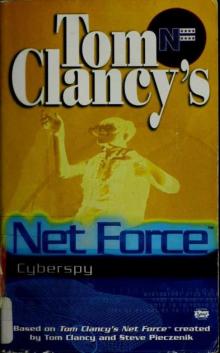 Cyberspy
Cyberspy Point of Contact
Point of Contact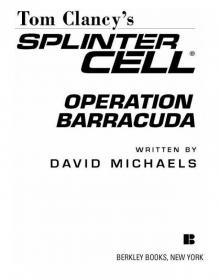 Operation Barracuda (2005)
Operation Barracuda (2005)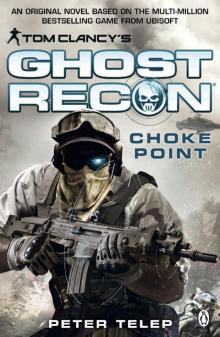 Choke Point
Choke Point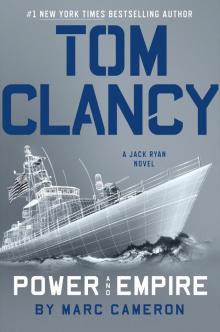 Power and Empire
Power and Empire Every Man a Tiger: The Gulf War Air Campaign
Every Man a Tiger: The Gulf War Air Campaign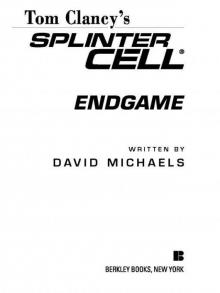 Endgame (1998)
Endgame (1998)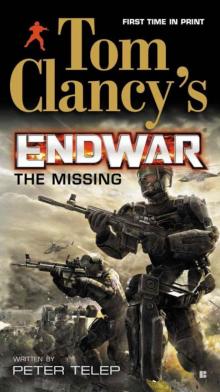 EndWar: The Missing
EndWar: The Missing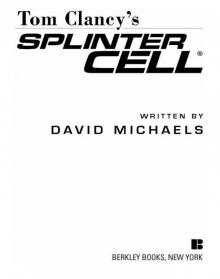 Splinter Cell (2004)
Splinter Cell (2004) The Great Race
The Great Race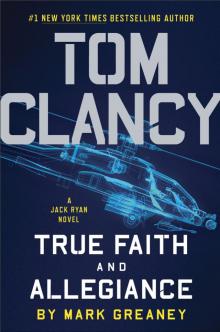 True Faith and Allegiance
True Faith and Allegiance Deathworld
Deathworld Ghost Recon (2008)
Ghost Recon (2008) Duel Identity
Duel Identity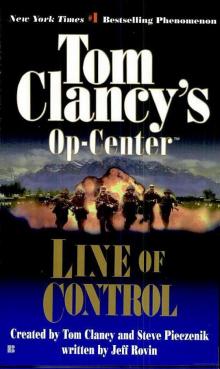 Line of Control o-8
Line of Control o-8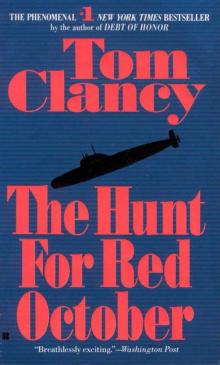 The Hunt for Red October jr-3
The Hunt for Red October jr-3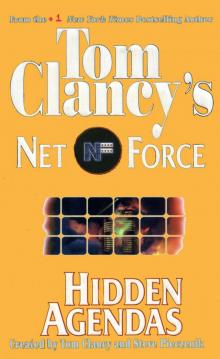 Hidden Agendas nf-2
Hidden Agendas nf-2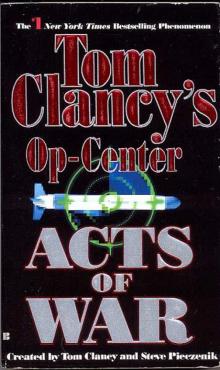 Acts of War oc-4
Acts of War oc-4 Ruthless.Com pp-2
Ruthless.Com pp-2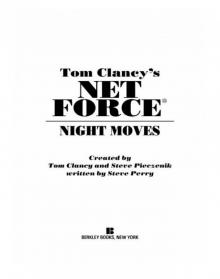 Night Moves
Night Moves The Hounds of Rome - Mystery of a Fugitive Priest
The Hounds of Rome - Mystery of a Fugitive Priest Into the Storm: On the Ground in Iraq sic-1
Into the Storm: On the Ground in Iraq sic-1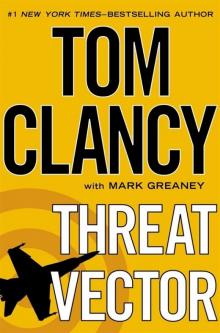 Threat Vector jrj-4
Threat Vector jrj-4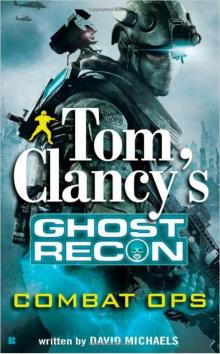 Combat Ops gr-2
Combat Ops gr-2 Virtual Vandals nfe-1
Virtual Vandals nfe-1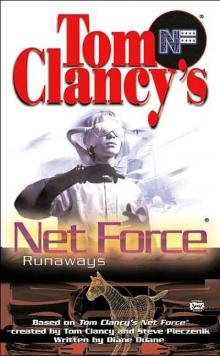 Runaways nfe-16
Runaways nfe-16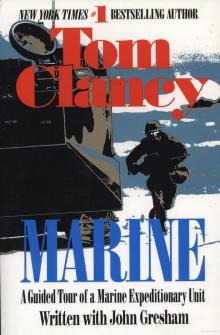 Marine: A Guided Tour of a Marine Expeditionary Unit tcml-4
Marine: A Guided Tour of a Marine Expeditionary Unit tcml-4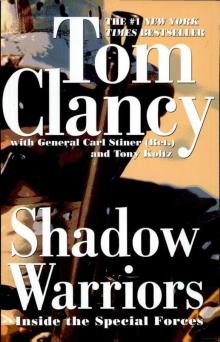 Shadow Warriors: Inside the Special Forces sic-3
Shadow Warriors: Inside the Special Forces sic-3 Jack Ryan Books 1-6
Jack Ryan Books 1-6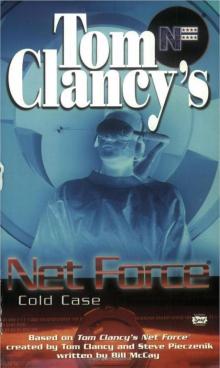 Cold Case nfe-15
Cold Case nfe-15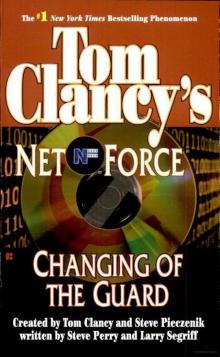 Changing of the Guard nf-8
Changing of the Guard nf-8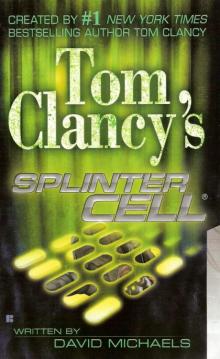 Splinter Cell sc-1
Splinter Cell sc-1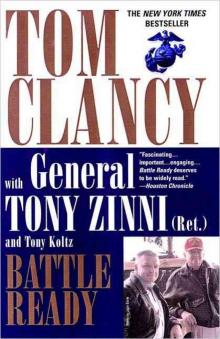 Battle Ready sic-4
Battle Ready sic-4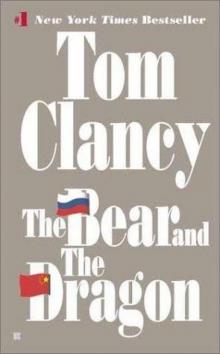 The Bear and the Dragon jrao-11
The Bear and the Dragon jrao-11 Fighter Wing: A Guided Tour of an Air Force Combat Wing tcml-3
Fighter Wing: A Guided Tour of an Air Force Combat Wing tcml-3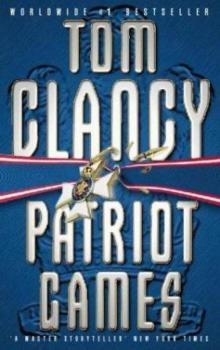 Patriot Games jr-1
Patriot Games jr-1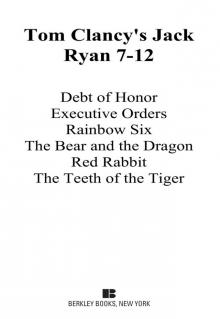 Jack Ryan Books 7-12
Jack Ryan Books 7-12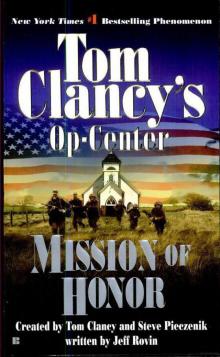 Mission of Honor o-9
Mission of Honor o-9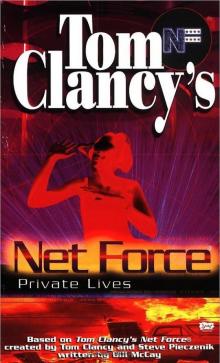 Private Lives nfe-9
Private Lives nfe-9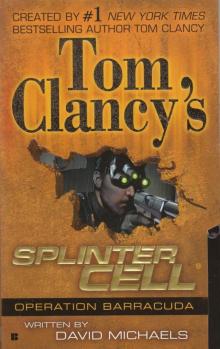 Operation Barracuda sc-2
Operation Barracuda sc-2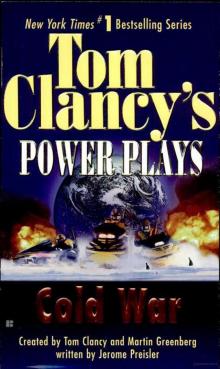 Cold War pp-5
Cold War pp-5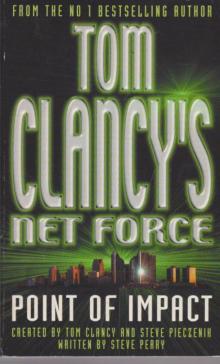 Point of Impact nf-5
Point of Impact nf-5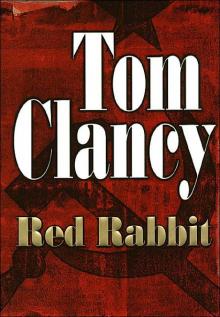 Red Rabbit jr-9
Red Rabbit jr-9 The Deadliest Game nfe-2
The Deadliest Game nfe-2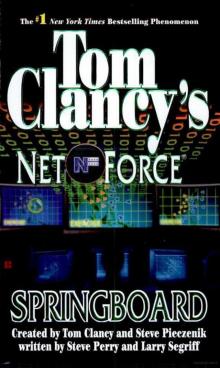 Springboard nf-9
Springboard nf-9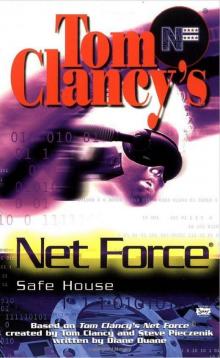 Safe House nfe-10
Safe House nfe-10 EndWar e-1
EndWar e-1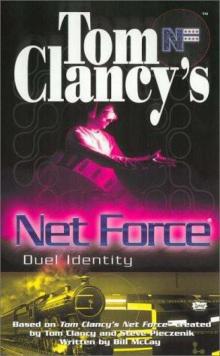 Duel Identity nfe-12
Duel Identity nfe-12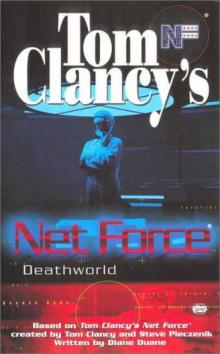 Deathworld nfe-13
Deathworld nfe-13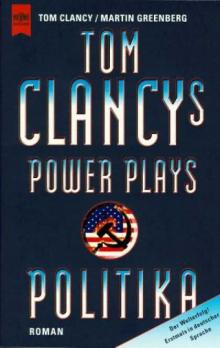 Politika pp-1
Politika pp-1 Rainbow Six jr-9
Rainbow Six jr-9 Tom Clancy's Power Plays 1 - 4
Tom Clancy's Power Plays 1 - 4 Endgame sc-6
Endgame sc-6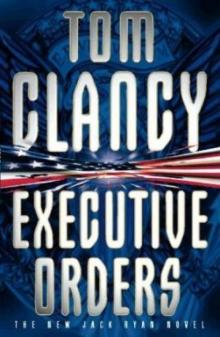 Executive Orders jr-7
Executive Orders jr-7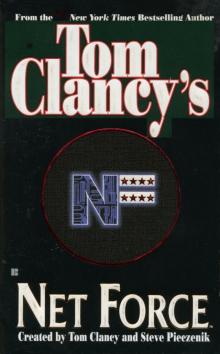 Net Force nf-1
Net Force nf-1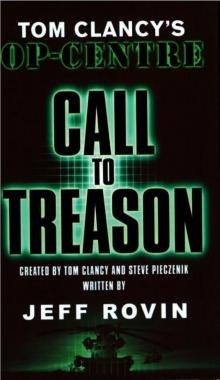 Call to Treason o-11
Call to Treason o-11 Locked On jrj-3
Locked On jrj-3 Against All Enemies
Against All Enemies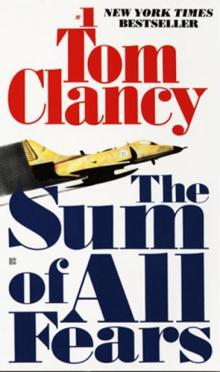 The Sum of All Fears jr-7
The Sum of All Fears jr-7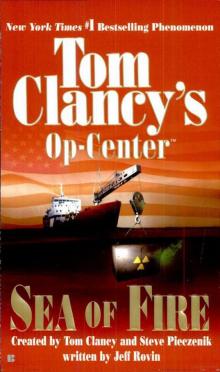 Sea of Fire o-10
Sea of Fire o-10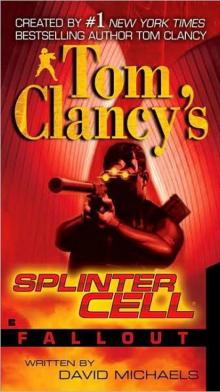 Fallout sc-4
Fallout sc-4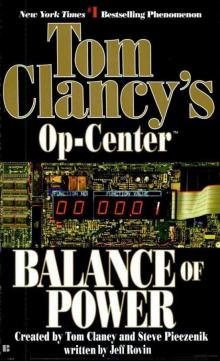 Balance of Power o-5
Balance of Power o-5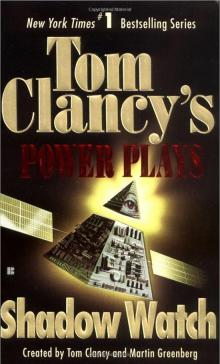 Shadow Watch pp-3
Shadow Watch pp-3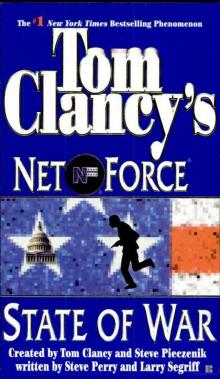 State of War nf-7
State of War nf-7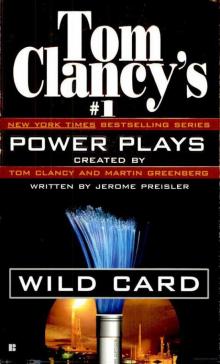 Wild Card pp-8
Wild Card pp-8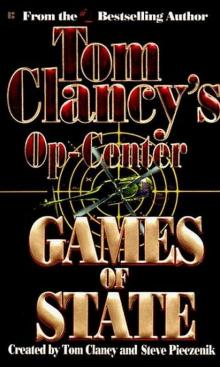 Games of State o-3
Games of State o-3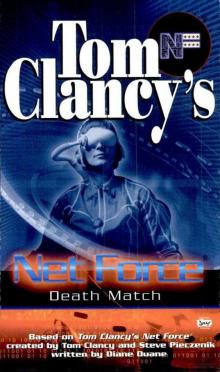 Death Match nfe-18
Death Match nfe-18 Against All Enemies mm-1
Against All Enemies mm-1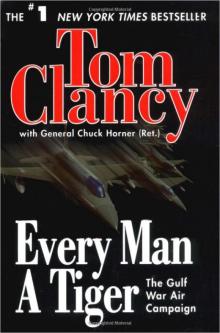 Every Man a Tiger: The Gulf War Air Campaign sic-2
Every Man a Tiger: The Gulf War Air Campaign sic-2 Cybernation nf-6
Cybernation nf-6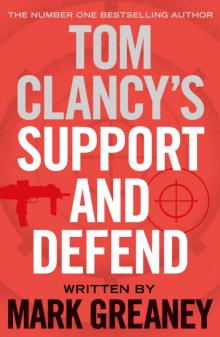 Support and Defend
Support and Defend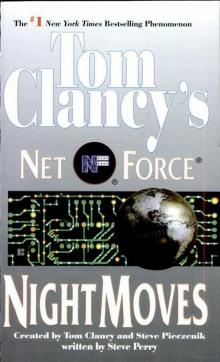 Night Moves nf-3
Night Moves nf-3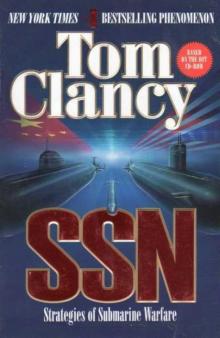 SSN
SSN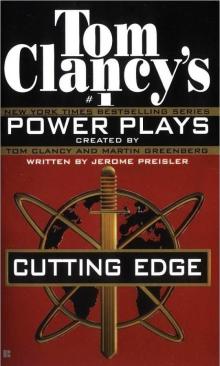 Cutting Edge pp-6
Cutting Edge pp-6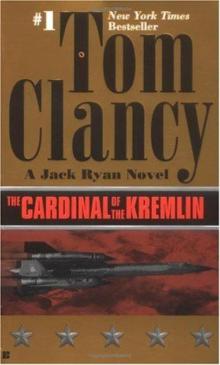 The Cardinal of the Kremlin jrao-5
The Cardinal of the Kremlin jrao-5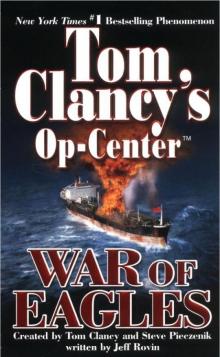 War of Eagles o-12
War of Eagles o-12 Op-Center o-1
Op-Center o-1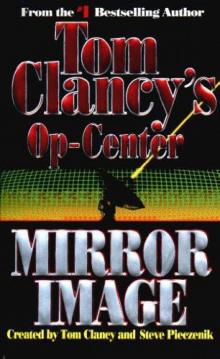 Mirror Image o-2
Mirror Image o-2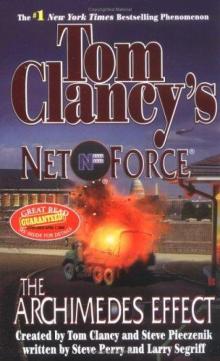 The Archimedes Effect nf-10
The Archimedes Effect nf-10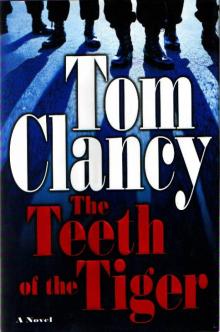 Teeth of the Tiger jrj-1
Teeth of the Tiger jrj-1 Bio-Strike pp-4
Bio-Strike pp-4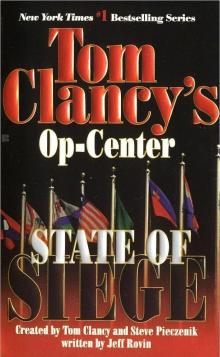 State of Siege o-6
State of Siege o-6 Debt of Honor jr-6
Debt of Honor jr-6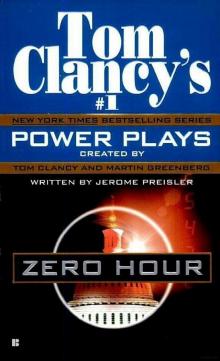 Zero Hour pp-7
Zero Hour pp-7 Ghost Recon gr-1
Ghost Recon gr-1 Command Authority jr-10
Command Authority jr-10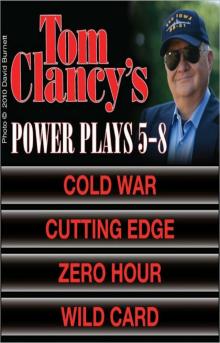 Tom Clancy's Power Plays 5 - 8
Tom Clancy's Power Plays 5 - 8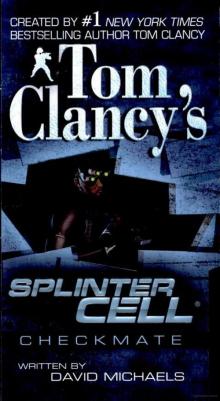 Checkmate sc-3
Checkmate sc-3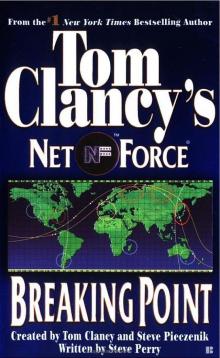 Breaking Point nf-4
Breaking Point nf-4 Gameprey nfe-11
Gameprey nfe-11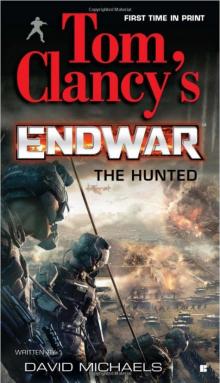 The Hunted e-2
The Hunted e-2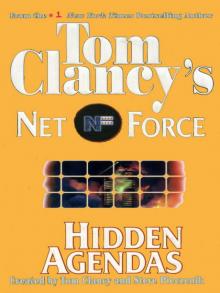 Hidden Agendas
Hidden Agendas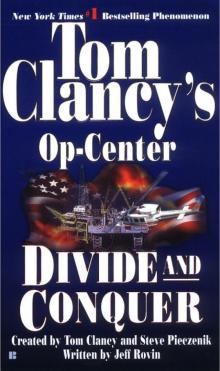 Divide and Conquer o-7
Divide and Conquer o-7